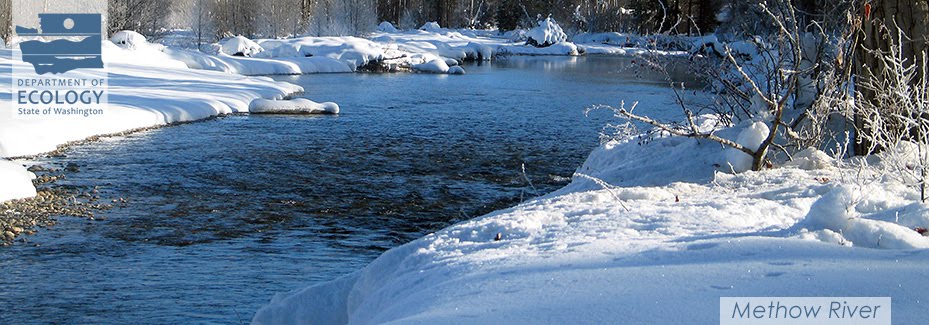By Dan Partridge, Communications Manager, Water Resources Program
State and federal agencies meeting to discuss the conditions that may lead to a declaration of drought in Washington shared good and bad news Feb. 6 at the Department of Ecology.
As dry conditions persist in our state, Ecology convened the first meeting of the Water Supply Availability Committee (WSAC). This group will decide if a recommendation should be made to the Governor's office for a drought declaration anywhere in the state.
Unlike most states, Washington has a statutory definition of drought. It requires that two conditions be met and it differs from the drought rating scale applied by the U.S. Department of Agriculture. The two conditions are:
- An area has to be experiencing or projected to experience a water supply that is below 75 percent of normal, and
- Water users within those areas will likely incur undue hardships as a result of the shortage.
As of the February 1, the U.S. Department of Agriculture determined more than 90 percent of Washington state to be in a moderate drought. Monitoring data from the USDA's Natural Resources Conservation Service showed snowpack at 55 percent of average statewide.
The first step is to ask for relief funds
These conditions are a far cry from what water users are experiencing in California, Oregon and Idaho but Ecology has convened the WSAC to prepare for the possibility of a drought and our first priority is to ask the Legislature for drought relief funds -- and the authority to spend them -- should our citizens and the economy experience hardships from drought.But determining when or where to recommend a drought declaration, based on current conditions, is perhaps more difficult than preparing to provide drought relief.
The bad news and the good news
Data shared at the Feb. 6 meeting gave the committee cause for concern in that:- Conditions vary in basins across the state. Currently, water supply as measured in snowpack, January precipitation and reservoir levels is at less than 60 percent of the "median" in the Central Columbia, Upper and Lower Yakima, Lower Columbia, South Puget and Central Puget and Olympic regions.
- Snowpack is currently at 35 percent of average in the Olympic Mountains.
- Statewide, Washington would need 200 percent of average snowfall over the next two months to get back to normal water supply.
- The weather forecast for the months of March – May shows only an "equal chance" of above or below precipitation.
- Statewide average stream flows for now are normal.
- Seattle Public Utilities typically sees a 30 to 40 percent drop in water consumption this time of year and a spokesman said protecting the water supply for more than 3 million people is "manageable" right now "provided we get normal spring rain."
- Reservoirs in the Yakima Basin are in "good shape" although snowpack is "in bad shape."
Ecology is providing a clearinghouse for drought information. Our Drought Information Web page at
http://www.ecy.wa.gov/drought/index.html provides links to water supply information provided by all members of WSAC.

No comments:
Post a Comment